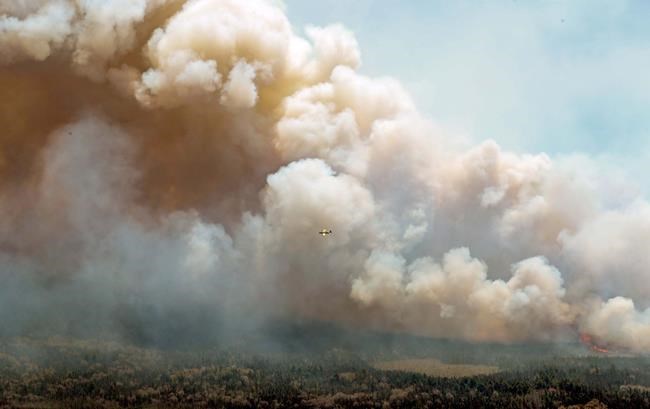The wildfires plaguing residents in Alberta and Nova Scotia are part of a larger trend that’s driving up the cost of home insurance as extreme weather becomes more common, insurance experts say.
“Premiums in Canada have been increasing for some time already,” said Marcos Alvarez, global head of insurance at DBRS Morningstar.
After a large event like the wildfires dominating 91原创 headlines, customers in those geographical areas might see their policies re-priced, said Alvarez, or might see insurers becoming more involved: “When you have losses of this magnitude, you might reassess how you approach your underwriting price.”
Over time, these changes on a local level will contribute to the larger trend, he said.
According to a July 2022 report by Ratesdotca, home insurance premiums in Ontario had risen around 10 per cent in less than a year, with increasing incidences of severe weather one of several factors contributing to higher costs for homeowners, especially those in smaller population centres.
A similar report published a year earlier found that home insurance rate growth was well outpacing inflation, with average home insurance rates in Alberta up 140 per cent over 10 years to $1,779 as of early 2021, while in Ontario the average annual rate was up 64 per cent to $1,284.
Larger losses are the biggest contributor to higher premiums, whether those losses are due to natural disasters, inflation or other rising costs, said Daniel Ivans, an insurance expert with Ratesdotca.
“When you have a loss, it's more expensive now than it's ever been,” he said.
According to the Insurance Bureau of Canada’s annual report, severe weather caused $3.1 billion in insured damage in 2022, up from $2.1 billion in 2021, and the third worst year in 91原创 history. The Fort McMurray fire put 2016 in the highest spot at almost $6 billion.
The increasing cost of insuring homes at risk for damage from extreme weather was highlighted this week in California, when insurer State Farm announced it would no longer accept commercial and residential insurance applications in the state due to “historic increases in construction costs outpacing inflation, rapidly growing catastrophe exposure and a challenging reinsurance market.”
The trend where certain risks become less, or completely, uninsurable because of climate change is happening around the world, said Alvarez. State Farm isn’t even the first insurer to leave the California market, he noted.
Insurers in Canada face the same problems as State Farm, said Craig Stewart, IBC's vice-president of climate change and federal issues. These include higher costs for rebuilding and reinsurance, plus more frequent events like wildfires, he said.
But it’s unlikely Canada will see an insurer make the same move as State Farm any time soon, said Alvarez. For one, home insurance prices in California are regulated, meaning insurers have limits on how much they can charge, while in Canada insurers don’t have the same barriers.
The California situation is extreme, Stewart said, with fires becoming not just more common, but essentially a predictable event.
“Living in California is akin to living on a floodplain in Canada,” he said. “We know that the disaster is going to happen.”
Ivans said while insurers in Canada sometimes pause new business amid a disaster, this happens rarely and is only a matter of days or weeks.
Alvarez said while homeowners are currently covered for wildfires as part of standard home insurance, they’re underinsured for other risks, including flooding.
When a segment becomes uninsurable, it’s a public policy problem, he said. That’s often when the government steps in, which it did with flooding, promising to create a national low-cost flood insurance program in the latest federal budget.
Alvarez thinks we could see the 91原创 government getting more involved in insurance in the future if other natural disasters become increasingly difficult to insure against.
“Wildfire could be a potential candidate for some sort of public program if this becomes more and more prevalent,” he said.
As weather events become more extreme, it is becoming more challenging for insurers to keep coverage affordable without government partnerships, said Stewart.
The National Flood Insurance Program, once developed, can be used as a framework for covering other types of extreme weather, said Stewart.
“So it’s a national flood insurance program now, but built to be multi-peril in the future,” he said.
However, Stewart said it’s clear Canada needs more than just insurance for weather events, as the current wildfire situation is showing a lack of preparation and investment in certain areas, he said.
Extreme weather is highlighting the need for risk mapping, awareness campaigns, infrastructure improvements and other elements making up a “holistic game plan” for natural disasters, said Stewart.
“We’re seeing these events now year after year after year,” he said.
“We're having catastrophic events several times a year in some parts of the country, and so these aren't flukes. We now have to realize that this is now going to be the trend moving forward.”
This report by The 91原创 Press was first published June 2, 2023.
Rosa Saba, The 91原创 Press
